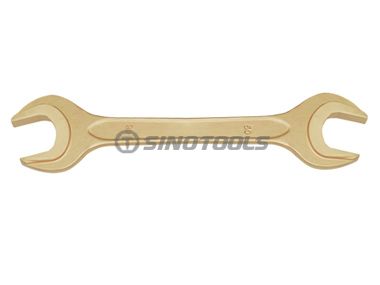

Nov. 25, 2022
Non-sparking tools have two unique features. First, non-sparking tools, as their name suggests, do not produce sparks. This makes them perfect for work involving flammable conditions. The second unique feature is due to the fact that they do not contain iron. This type of tool is made of non-ferrous metals, which means they are iron-free alloys. Meaning they are also non-magnetic tools. These tools can be used when working on hospital equipment, such as MRI machines.
These great tools are made of several different alloys.
● Aluminum-copper is a lightweight alternative to many of the heavier copper-based alloys. While not as strong as beryllium alloys, this alloy retains its properties.
● Plastic tools are not only at the top of everyone's must-have list, but they are definitely non-magnetic and they never spark.
●Beryllium copper is the strongest and hardest copper alloy, boasting a tensile strength of 1280-1480 MPa. Beryllium copper tools are a must for the toughest jobs.
●Bronze is electrically conductive but does not spark. These tools have a long history in mechanical engineering and combat and are an excellent addition to any toolbox.
●Brass tools are a bit more expensive, they are durable, and have an aesthetic sheen to them. These tools can be stained, but this does not diminish their quality.

If you are a young professional craftsman or welder looking to build a practical tool kit for yourself, then non-sparking tools are essential. There are many projects that require you to work in highly flammable areas or on magnetic equipment that could yank tools from your hands. Safety should always come first when it comes to situations that endanger humans. Working with flammable materials or powerful magnetic equipment is stressful enough, even without the constant threat of explosion.
What is the most important thing to know about “non-sparking” tools?
Non-sparking tools also produce what are sometimes called "cold sparks". These cold sparks have very low heat and do not ignite carbon disulfide, which has the lowest ignition point of any substance known to man. Therefore, while "spark-free" tools reduce the risk of sparking, they do not eliminate the possibility of sparking. The name "non-sparking" is misleading because these tools are capable of producing sparks: the term "spark-reducing tools" better describes these tools.
Non-metals such as wood, leather and plastic are suitable for some tools, such as spatulas, scrapers or spoons, without the risk of frictional sparks.
Non-sparking tools provide fire and explosion protection in environments where there is concern about sparks igniting flammable solvents, vapors, liquids, dust or residues.
Follow these guidelines to reduce the risk of explosion and fire
1.Ensure that all "non-sparking" tools are kept clean and free of ferrous or other contaminants that could impede the non-sparking characteristics.
2.Select the proper size tool for the task (e.g., wrench opening to nut). Proper fit will help prevent the tool from slipping and reduce the chance of sparking.
3.Do not use non-sparking hand tools in direct contact with acetylene, which may form explosive acetylenes, especially in the presence of moisture.
4.Use local or mechanical ventilation systems, as appropriate, to remove hazardous materials, dust and vapors from the workplace.
5.Non-sparking tools require more frequent reconditioning. Normal safety procedures such as providing eye and face protection, adequate suction and dust collection facilities should be followed when grinding non-sparking tools.
Remember, there is no such thing as a truly non-sparking tool. On any job where flames are used or sparks are generated, make sure that an explosive atmosphere is not created. Such atmospheres include flammable vapor-air mixtures and organic dust clouds, such as flour or coal dust. Isolation, ventilation and decontamination are ways to ensure a safe working environment. Explosion meters are used in the workplace to protect people working in hazardous environments.
If you are interested in obtaining these tools, feel free to contact us for more information.
Latest Post
October Highlights: TOOL JAPAN and the 136th Canton Fair
SINOTOOLS recently participated in two significant exhibitions: TOOL JAPAN, held from October 9-11, 2024, in Japan, and the 136th Canton Fair from October 15-19, 2024.
Nov. 06, 2024
Our Journey at the 135th Canton Fair in Guangzhou
We are pleased to announce that SINOTOOLS recently participated as a supplier in the 135th Canton Fair in Guangzhou, China. As a leading exporter of hand tools in China, we were honored to exhibit our classic hand tool collection and connect with buyers from all over the world.
Apr. 22, 2024